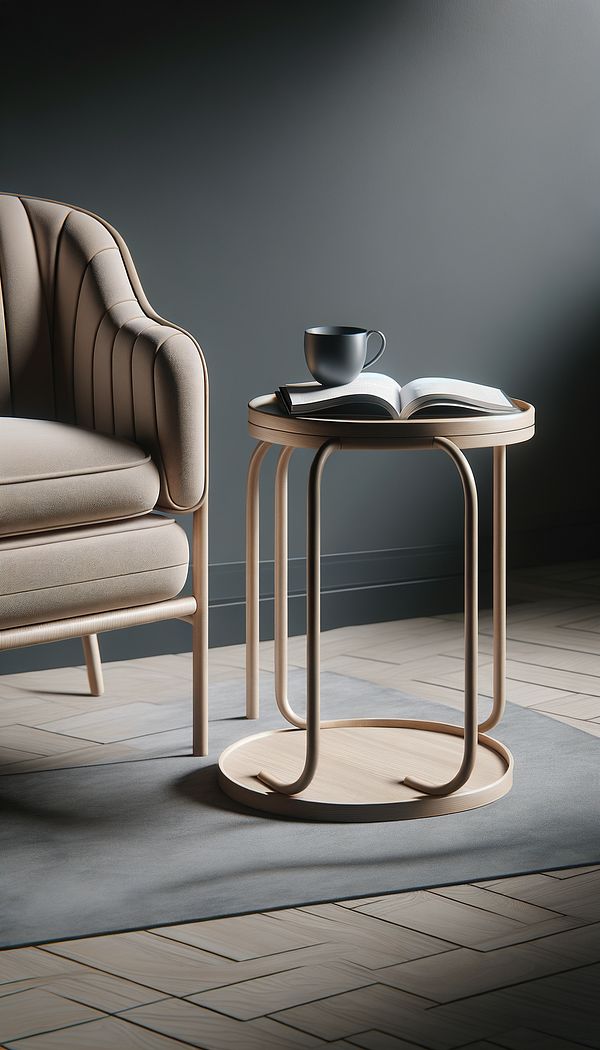What is a Tabouret?
A small, often portable stool or seat.
Description
A tabouret is a versatile piece of furniture that finds its origins in France, where it initially denoted a small seat without arms or a back, typically made from wood or metal. Over the years, the term has expanded to include a variety of small seating options and, in some contexts, small tables or stands. Though traditionally simplistic in design, modern interpretations of tabourets can range from minimalist to ornate, often reflecting the influences of various design styles.
The beauty of a tabouret lies in its multifunctionality and portability. It can serve as a decorative element, additional seating for guests, or even a compact table for holding books, plants, or small decorative items. Many tabourets are designed with craftsmanship and aesthetic appeal in mind, incorporating materials such as exotic woods, metals, and upholstered finishes. They can seamlessly fit into a range of interior design schemes, from traditional to contemporary, depending on their design.
In professional interior design, tabourets are valued for their ability to add functionality and aesthetic appeal to a space without occupying substantial room. They are often used in living rooms, bedrooms, and entryways where space is at a premium or where an additional decorative touch is desired. Customizable in both form and function, they exemplify the intersection of practicality and design.
Usage
In a contemporary living room, a tabouret might be placed next to a sofa as a convenient spot to rest a cup of coffee or a book, blending seamlessly into the room's aesthetic. In an entryway, a wooden tabouret could serve as a perch for removing shoes or as a stand for a small plant, adding both function and decorative appeal to the space. In more opulent settings, a gold or silver-finished tabouret could provide a luxurious accent next to a freestanding bathtub or within a spacious walk-in closet.
FAQs
-
Can a tabouret be used as a table?
Yes, a tabouret can sometimes double as a small table, depending on its design and the needs of the space. They are particularly convenient in tight spaces where a full-sized table might not fit.
-
Are tabourets portable?
Yes, one of the inherent features of a tabouret is its portability. They are designed to be lightweight and easy to move, making them perfect for flexible seating or for changing the look of a room on a whim.
-
Do tabourets come in different styles?
Absolutely. Tabourets come in a range of styles, from traditional wooden designs to modern metal and upholstered options. Their styles can easily be aligned with any interior design theme, from minimalist to ornate.
Practical Application
Considering its versatility and small footprint, a tabouret can be an excellent addition to almost any room. When choosing a tabouret, consider both its function and aesthetic appeal in relation to the existing decor. For a cohesive look, select a tabouret that complements the style and color scheme of the room. If additional seating is often needed, consider opting for a tabouret with a comfortable upholstered seat. For smaller spaces, a slender, minimalist design can add functionality without cluttering the room.
-
BandingBanding refers to the decorative detail created by applying strips of material to the edges or borders of furniture, textiles, or architectural features.
-
ChesterfieldA Chesterfield is a type of deep-buttoned sofa, with arms and back of the same height.
-
CassoneA large wooden chest, often richly decorated, used historically in Italy for storage and as a dowry trunk.
-
OnlayAn ornamental design applied to the surface of objects.
-
SlipcoverA slipcover is a fitted protective cover that can be slipped off and on a piece of furniture.
